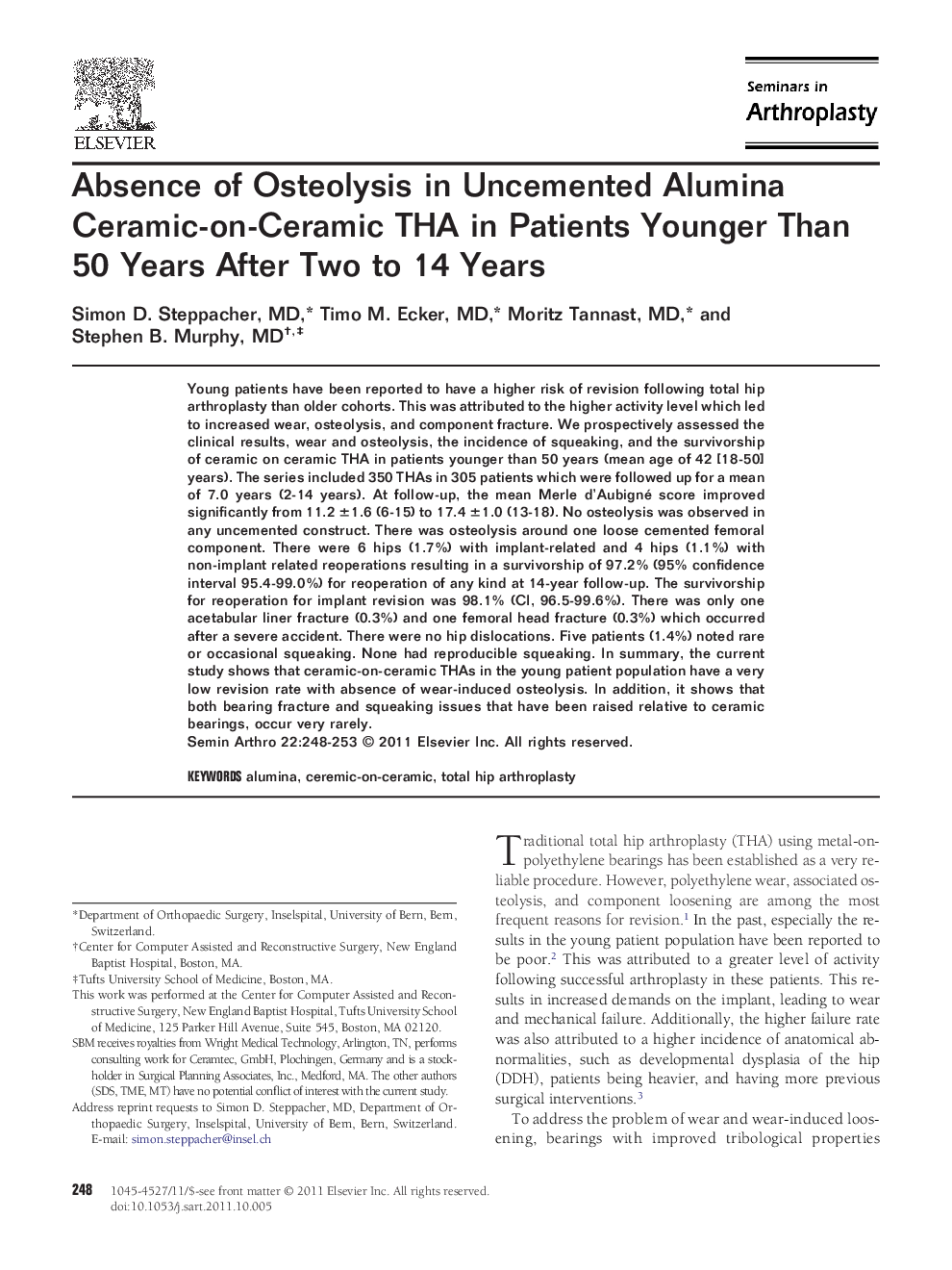| Article ID | Journal | Published Year | Pages | File Type |
|---|---|---|---|---|
| 4093864 | Seminars in Arthroplasty | 2011 | 6 Pages |
Young patients have been reported to have a higher risk of revision following total hip arthroplasty than older cohorts. This was attributed to the higher activity level which led to increased wear, osteolysis, and component fracture. We prospectively assessed the clinical results, wear and osteolysis, the incidence of squeaking, and the survivorship of ceramic on ceramic THA in patients younger than 50 years (mean age of 42 [18-50] years). The series included 350 THAs in 305 patients which were followed up for a mean of 7.0 years (2-14 years). At follow-up, the mean Merle d'Aubigné score improved significantly from 11.2 ±1.6 (6-15) to 17.4 ±1.0 (13-18). No osteolysis was observed in any uncemented construct. There was osteolysis around one loose cemented femoral component. There were 6 hips (1.7%) with implant-related and 4 hips (1.1%) with non-implant related reoperations resulting in a survivorship of 97.2% (95% confidence interval 95.4-99.0%) for reoperation of any kind at 14-year follow-up. The survivorship for reoperation for implant revision was 98.1% (CI, 96.5-99.6%). There was only one acetabular liner fracture (0.3%) and one femoral head fracture (0.3%) which occurred after a severe accident. There were no hip dislocations. Five patients (1.4%) noted rare or occasional squeaking. None had reproducible squeaking. In summary, the current study shows that ceramic-on-ceramic THAs in the young patient population have a very low revision rate with absence of wear-induced osteolysis. In addition, it shows that both bearing fracture and squeaking issues that have been raised relative to ceramic bearings, occur very rarely.
